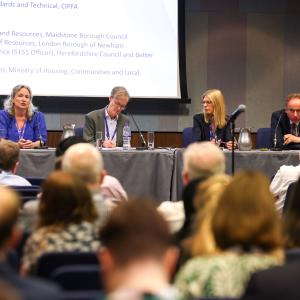The government should create some certainty about the level of finance available for social care costs, and redistribute funding away from wealthier older people
Yesterday the government released its care and support white paper and progress report on social care funding. These eagerly awaited documents set out the government’s thinking on how to address the serious need to reform the funding of social care (in practice, all care that is not provided by the NHS).
But the thinking is inadequate and insufficient. In particular, the government has not specified the level of the cap on costs that families would face for care (as the independent Dilnot Commission recommended).
Such a cap would give families certainty over their finances and enable financial services companies to come up with ways for people to save towards costs or pay for them (for example, through equity release). Without a cap, families are no further forward.
Long term social care funding is not well understood. The fact is that most people will have to pay for their own support, and residential care is very expensive. At a conference earlier this year, Reform highlighted that the average care home cost in the UK is £815 per week. On average, an elderly person in residential care will lose 80 per cent of everything they own due to the costs of care. Sadly, this is a huge shock for many families.
To protect families from facing 'catastrophic costs' the final report of the independent Commission on Funding of Care and Support published in July 2011 and led by Andrew Dilnot, suggested capping an individual’s lifetime contribution to care costs. It proposed a cap at a level somewhere between £25,000 and £50,000.
It also proposed keeping the current system by which people receive means-tested help from the government for care costs, but made it less onerous (by lifting the threshold for means-testing from an estate of £23,250 to an estate of £100,000).
A major barrier to the adoption of the Dilnot cap is that it would increase the cost to taxpayers. The Dilnot Commission itself estimated that the bill could be more than £1.7 billion. Therefore the Government has said that it will consult on the cap, and in the meantime encourage more families to defer payment until death (through a more expensive financial arrangement with their local authority).
But this is the wrong direction. It is an odd idea to turn a local authority into a bank or the equivalent of the Student Loans Company. Most importantly, it does not provide the certainty around total costs that a cap would deliver. The answer must be to increase the take up of financial products like equity release and immediate needs annuities, not to push local government into acting as a loan provider for the old. A market in these products cannot develop until the cap is agreed.
It is a mistake to push back decisions on capping the cost of care to the next Spending Review. The reality is that individuals will have to fund an increasing share of their own long term care. The best way to help families prepare for this is to encourage the take-up of the right financial products.
The government needed to introduce a cap and to set out ways that this could be fully funded. There is no shortage of public spending on elderly people. The funds for a cap could have been found from other budgets (such as the Winter Fuel Allowance, with an annual cost over £2 billion per year). The problem is not one of funding but a lack of political will.
Lauren Thorpe is research & corporate partnership director at the Reform think tank









